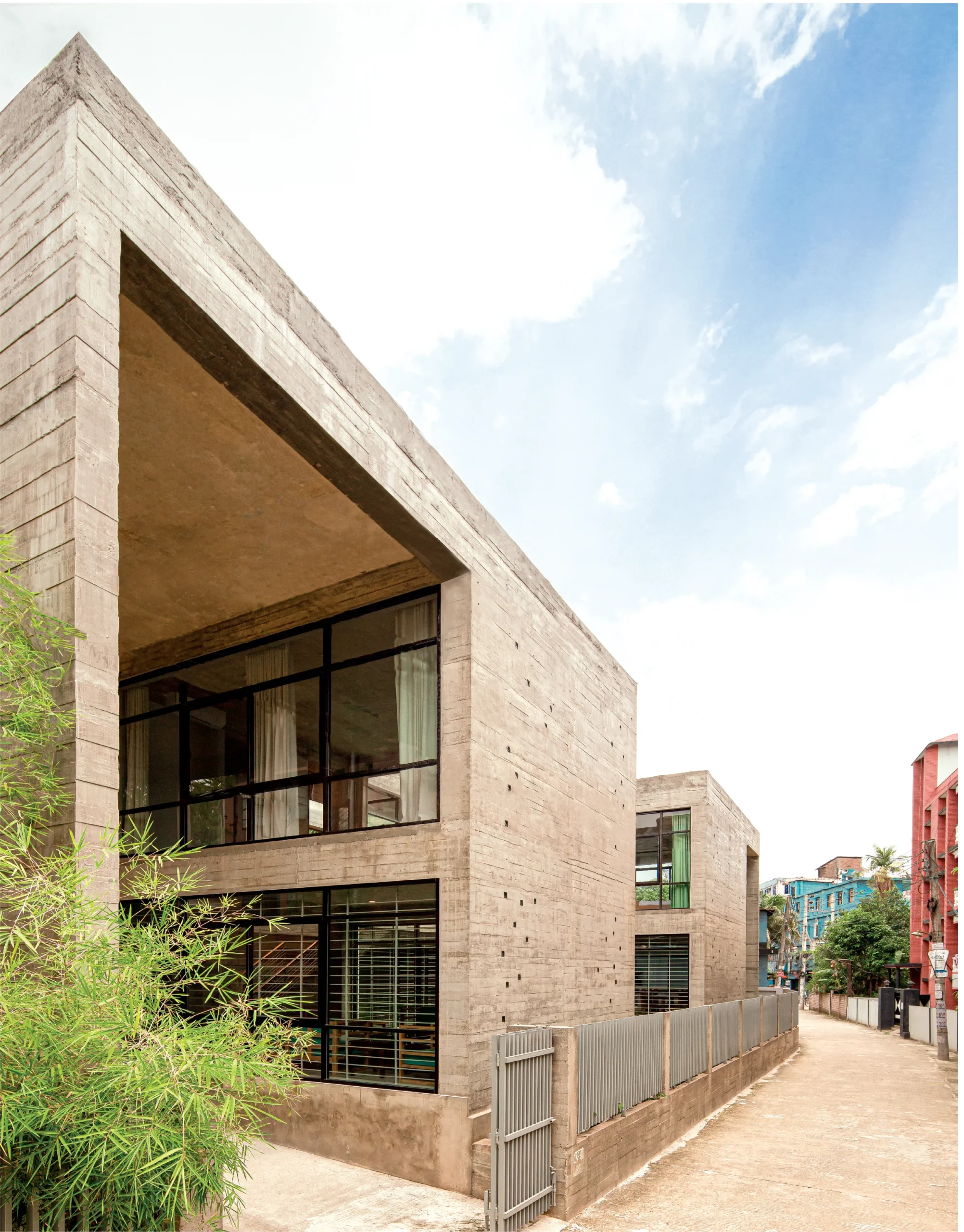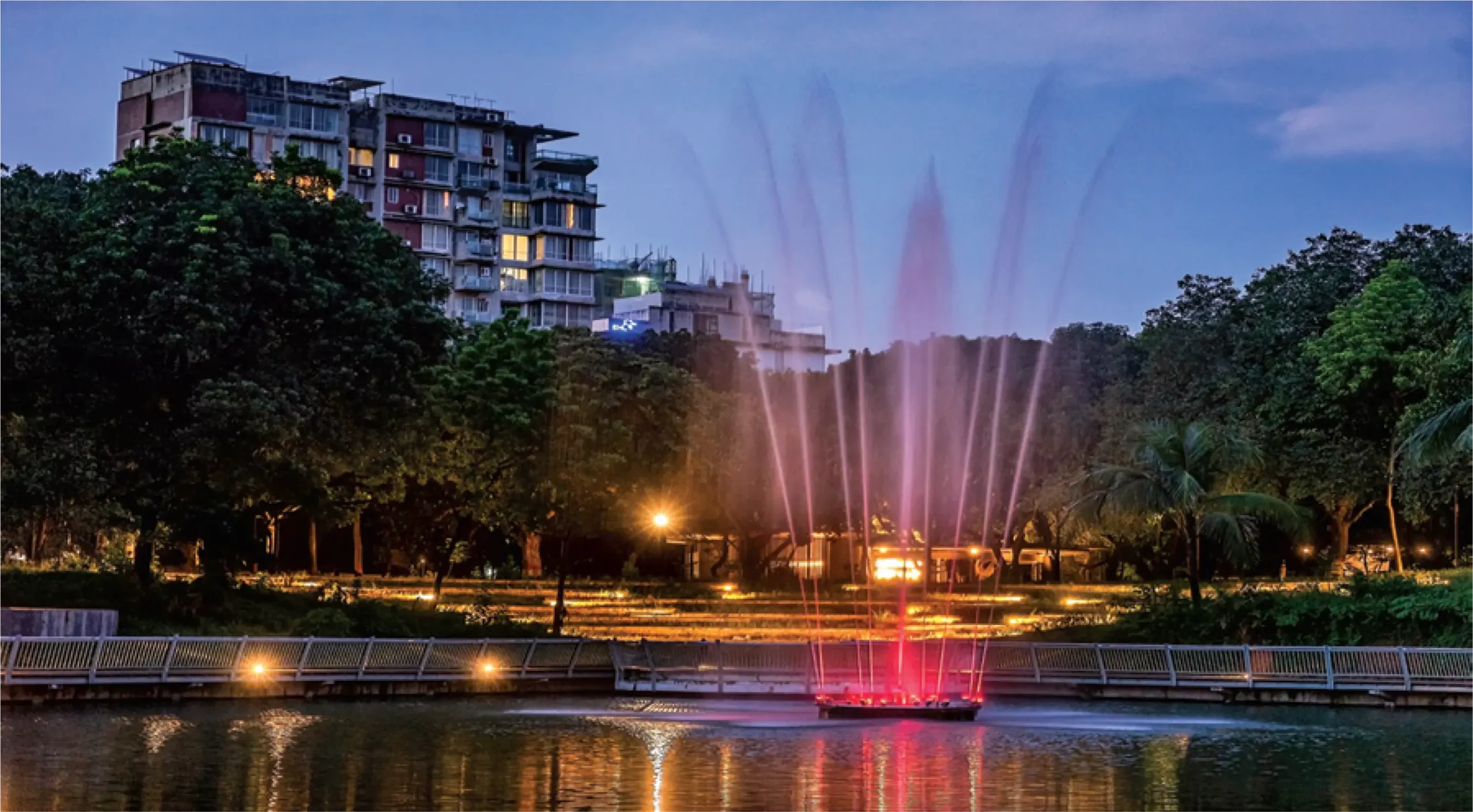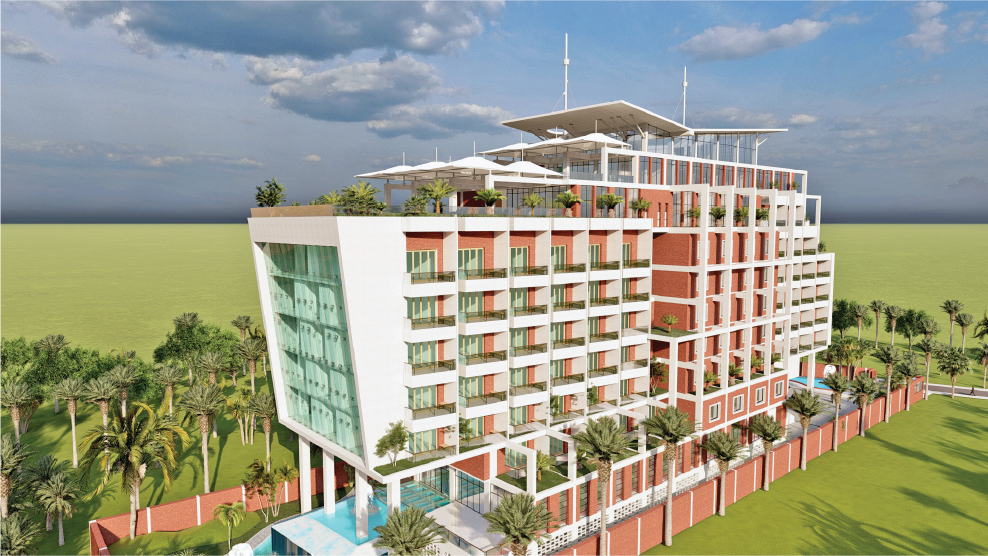
As Nurur Rahman Khan commenced his discussion on architecture, a concept exists only as an idea that becomes apparent once it is created. Attaining the deep level of architecture requires a great deal of time, attention, and meditation. If we wish to reach that level of it, we must bring our soul to it. It could be difficult for the public to comprehend or accept it entirely.

Nurur Rahman Khan began his architectural career at Bangladesh University of Engineering and Technology (BUET), despite lack of understanding of how architecture functions. The sole realisation he possessed was that architecture constitutes a fusion of engineering and creativity.
In his formative years, he delved deeply into music, photography, graphic design, acting and writing alike. Before he began his career in architecture, he had no prior experiences in drawing or sketching. Over the time, he acquired the skill of drawing architecture from mathematical drawings in the form of ‘axonometric’ drawings.

He did not become aware of architecture until the very end of his first academic year, since it was then that he was able to appreciate architecture’s beauty. As a consequence of his subpar craftsmanship, he used to receive lower grades. After his first year of school, he began going to the library to learn about the aesthetics of architecture. It was at that point during which he began comprehending the aesthetics of architecture, and since then he never stopped his journey to acquire knowledge about it thereafter.
He continued by outlining the method by which architects prioritise aesthetics over attaining the fundamental purpose of their design, instead of flaunting the design, one should be proud of it. The greatest architect of Bangladesh, according to him, is Muzharul Islam, and his level of prosperity ends there. We are forfeiting numerous facets, failing to appreciate the true essence of architecture. Our focus has shifted towards the grandiose, the towering, and the extravagant, relinquishing our humanity to the allure of grandeur and brand-centric values. Addressing the architects within our community, NR Khan inquired about the apparent challenge in reaching the remarkable levels of creativity and imagination set by Muzharul Islam in the field of architecture.
Tanya Karim and Nurur Rahman Khan, who are partners, founded an architectural firm with the goal of significantly altering the architectural arena. Their office became known for its theoretical pretext, search for situated modernity, and use of historical and cultural allusions. In the summer of 1991, Tanya Karim, NR Khan & Associates became known as an architectural firm leading the way in modern ideas in Bangladeshi architecture.
Throughout his academic journey, he teamed up with Tanya Karim as a groupmate, and their collaborative synergy flourished after they graduated between the years 1992 to 1993. In his viewpoint, when discussing Tanya Karim, he recognised her as a nurturing figure who would impart knowledge to classmates just before exams. He highlighted the enduring complementarity between himself and Tanya Karim.
During their studies with her, a profound mental connection was forged. Tanya Karim played a pivotal role in enlightening him about the intricacies of art, fashion, and other facets of design, drawing from her upbringing in a culturally enriched family. Their designs are always inextricably linked to the point at which the architecture’s user finds it worthwhile.
One of their cherished projects is the Shanchita Residence, envisioned as a Baganbari- A House in a Garden. It was conceived with the idea of providing a nurturing environment for both the users and their children to cherish as they grow. The concept of Baganbari is not merely about architecture; it’s a philosophy woven into the very roots of the design. It is a place where family bonds are nurtured, and the architecture becomes a silent witness to the laughter, joy, and shared moments that shape the family.
“A project is a canvas of someone else and we are the architects painting on it, if we indulged a self-centered design, it definitely would have a short lifespan,” Nurur Rahman Khan remarked.
They (TKNRK) have secured positions of distinction in numerous competitions, notably triumphing in the National Competition organised by the Institute of Architects Bangladesh (IAB) in 2012. They clinched the 1st prize for their outstanding design of the Bangla Academy.
The Bangla Academy project takes a multifaceted approach to sustainability rather than focusing only on being “environment friendly”. “Site” is the first sustainability metric that the project looks at. On the grounds of a historic building and later additions to the “Bangla Academy complex’’.
In the modern era, there appears to be a tendency to use sophisticated design techniques and technology in order to achieve a “green” solution to building design. It is important to remember that utilising the actual “environment” is one of the most logical approaches to designing “environment friendly” architecture. The site, the environment, and the climate should take center stage. “Indifferent” methods can be used to create a successful “green” architectural design. As for the building design, a significant portion of the office building has been designed to benefit from natural ventilation and abundant natural lights. Most days, the interior is bathed in natural light, creating a well-lit and airy environment.

Moreover, when discussing TKNRK, he emphasized, “We are forward-thinking individuals, acutely aware of the essence of our architectural pursuits. Our ancestors crafted cities like Mahasthangarh 2000 years ago without external guidance as today’s. Therefore, as architects today, why limit ourselves to the mundane concept of a ‘Kurey Ghar’ (hut) that does not align with our cultural heritage? Instead, let’s draw inspiration from the grandeur of the cities our forebears-built millennia ago and aspire to create something extraordinary. By utilizing costly materials to create an appearance of frugality, we are engaging in economic dishonestly within the country. This practice not only deceives the economy but also reflects a lack of integrity towards the materials themselves.”
For him, it holds paramount importance to instill into people a genuine understanding of the true essence and user-centricity of architecture, steering clear of the reliance on extravagant products merely for aesthetic appeal. Whether designing a school or any other space, the emphasis lies in ensuring that the design not only looks the part but also functions seamlessly according to its intended purpose.
In his elucidation about TKNRK, he expressed that, they do not adhere blindly to any distinct style, recognizing that they are in a constant state of learning and evolution. The absence of a signature style, in itself, constitutes their unique design approach. Emphasizing the diversity of our nation’s inherent genetic makeup, he sees it as a reason for gratitude and stroke of good fortune.
He arrived at a notable insight, stating, “A crucial aspect of architecture involves acquiring analytical skills.” The swifter one can navigate through the analytical facets of architecture, the more seamlessly they can transition to the creative realm, where the essence of creativity is found.”
Nurur Rahman Khan concluded, “In architecture, there exists certain principles of right and wrong. It’s a matter of developing that insight and you can then begin to layer upon it gradually, adding depth to your understanding.”
Written by Sharaban Tahura









